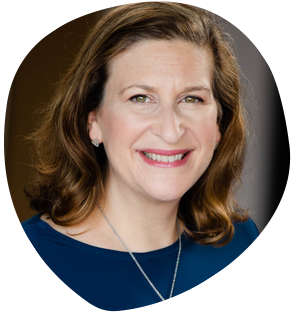Every day, our decisions shape our reality. According to a survey by Columbia University decision researcher, Sheena Iyengar, the average American makes approximately 70 conscious decisions every day. We decide our lives again and again, from the moment we wake.
Our moments of truth as leaders, and the most critical junctures in our personal lives come down to our decisions.
We are all peers in the experience of wrestling with a tough decision, feeling its weight, making our choice. Big ones and little ones, we all have them. A lot of them. You would think the science and practice of decision-making would be a required course in every high school since it impacts our life so profoundly.
Feeling certain about a decision can be deeply satisfying, because we feel we can decide to do based on what we know is right. Certainty though, is a terrible measure of quality.
We can be certain and terribly wrong.
We can be unsure and absolutely spot-on.
Confidence and competence don’t always go together.
So how do we define effective decision-making? We could evaluate whether a decision was good or bad based on the outcomes achieved.
But wait, sometimes good results happen from bad decisions, and vice versa. Forces outside our control, and beyond our awareness, may determine the outcome we experience.
As an executive coach, I’ve learned how to be a good thinking partner for those making big decisions by noticing the process being used.
Sometimes, people don’t have enough options. They’re trying to make decisions from poor choices, and having a tough time. I spoke with one gal who sought a career change.
She told me, “Either I’m going to stay put until I retire, or I need to quit and get started on something else, but I just can’t decide. I can’t really afford to quit my job.”
When she framed the decision as “Should I be bored for the rest of my professional life, or loose my financial footing?” it is easy to see why she didn’t feel like she could make a good choice.
We talked about her interests, and how she might experiment with a business start-up concept, while maintaining her current job. To do that, she felt she needed better skills in negotiating her job responsibilities. Negotiating skills would also be key for someone who was going to start her own business, so she decided to work on that for three months. Now she had an option that was worthy of her decision, and a plan to create several real alternatives to being bored.

In their book, Winning Decisions: Getting it Right the First Time, J. Edward Russo and Paul Schoemaker explain that a high quality decision-making process produces better outcomes more often. They certainly convinced me. I have used this model to help improve countless decisions.
Before I read the book Winning Decisions, I used to believe this decision-making myth: “We learn to make good decisions through experience.”
It’s false. If you have tried to grow other people’s skills, you know, firsthand, that people don’t always make the most of their experiences, or learn from them. The experience itself isn’t the where the learning lies.
You can have the same experience thousands of times and never learn. If our experience also includes reflecting, thinking, shifting perspective, expanding one’s awareness, improving, and changing, at least a little bit, then are we likely to make a better decision next time? Experiences aren’t optional. Learning is.
So we have to choose to learn from our experience, and this awareness really changed my thinking about the value of a debrief. Reflection, or debriefing, is where the learning from the experience is available to us.
Having a good decision-making process is one way you can get good decision outcomes. The four steps to decision-making below is a handy method, and the most clear, simple, easy-to-use decision-making process I have found. What I love most is that it not only gets you through the decision, it also grows your ability to make good decisions when you use it.
I’ve found this process serves well for a lot of decisions, and I hope that it will help you the next time you feel you are stuck at a crossroads.

The Four Steps to Decision-Making
The decision-making process, advocated by Russo & Schoemaker in Winning Decisions, consists of the following simple, clear, and useful steps. You can start anywhere:
1. Framing the decision – Determining your viewpoint on the issue. This includes which aspects of the situation are considered important, and which are not.
What decision are your really making? What outcome do you seek?
2. Gathering intelligence and generating options – Seeking knowable facts and options to enable decision-making in the face of uncertainty.
What options exist? How much can be known?
3. Coming to conclusions – Determining how will you evaluate the options. Consciously decide how to decide, before coming to conclusion.Use your ethics, values, and heart, as well as your intellect. Different methods make sense for different types of decisions.
How should decisions like this be made? Who else needs to be involved?
4. Learning– Learning from the results of past decisions to continually improve decision-making skills.
What were the results? What did you learn from the experience?
My friend who was choosing whether to move out of state found that by reflecting on his past decisions, he could reframe his current dilemma, build better options, and include his values as he came to conclusions. The four steps helped him think through the decision in productive way.
Having this four-step process helps to create a better outcomes. Build your skills here, and you will use them again and again to serve the causes you care about.
Remember, decision-making is an art as well as a practice. We are all peers in learning how to do this well.
Goodness knows, the world can use more effective, ethical decision-making at every level. Let’s keep getting good at it.
I’d love to hear your experience with this process. Leave a comment below, or join the discussion on my Facebook page.

Jessica Hartung
Jessica Hartung is a partner, coach, and guide for those leveling-up their personal professional leadership, their teams, and their communities to a better future.
Jessica has a passion for inspiring and preparing people to grow from their work to improve their lives. In 1998, she founded Integrated Work, a consulting firm that brings top-notch professional development to mission-driven leaders, while being a learning laboratory for innovative work practices.
Jessica provides self-directed professional development tools to leaders at all levels striving to create positive impact.
